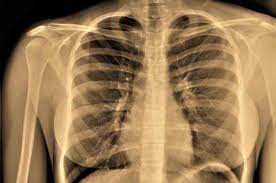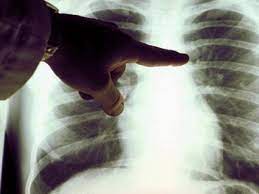Occupational lung diseases
The term “occupational lung disease” refers to diseases caused or exacerbated by contact with sensitizing agents in the workplace. This fact sheet examines some types of occupational lung diseases, their causes and treatment. Various diseases can be caused or exacerbated by sensitizing agents present in the workplace. Each agent has a different effect on the lungs, with different symptoms.
- This content is available in multiple languages.
- Table of contents
- Occupational asthma
- Allergic alveolitis
- Chronic obstructive pulmonary disease (COPD)
- Pleural mesothelioma
- Infectious diseases of the respiratory system
- What symptoms may indicate occupational lung disease?
- What to do if occupational lung disease is suspected?
- When should you seek compensation?
- Action in Europe
- Insights
- Occupational asthma
There are three types of occupational asthma
Pre-existing asthma is exacerbated by the work environment Asthma resulting from contact with hypersensitive agents, such as chemicals or dust, in the workplace. It is estimated that this type of asthma can account for about 10% of asthma cases that occur in adulthood.
A less common type is asthma with reactive airway dysfunction (RADS) or simply irritating asthma. It is a form of asthma that occurs after accidental exposure due to a specific event, such as a chemical spill or fire.
What is the cause? Several substances can cause occupational asthma. They are listed below
Symptoms: People with occupational asthma usually have common asthma symptoms, such as coughing, wheezing, chest tightness, and difficulty breathing. The substance can also affect the nasal mucosa causing sneezing, nasal congestion and rhinitis.
Management:
Optimal treatment of occupational asthma primarily involves removing the patient from exposure. This must be done as soon as the diagnosis is confirmed, ideally within one year of the onset of symptoms to ensure withdrawal of asthma. The patient may need to be transferred to another ward or job. If this is not possible, health professionals can help manage symptoms in the workplace, but this type of asthma is usually difficult to control.
Allergic alveolitis
This pathology is caused by an allergic reaction, in the work environment, to an agent that irritates the alveoli (small lung cavities). Prolonged exposure may cause permanent scarring.
What is the cause?
The disease is caused by repeated (cumulative) inhalation of small particles, which in some people can lead to allergic reactions. The most common occupational cause is liquids used in metalworking, but also the inhalation of fungal spores present in moldy hay or wood; another cause is contact with birds.
Symptoms: in general, chest tightness and shortness of breath, which may occur within 12 hours after exposure. Unlike asthma, the disease is also associated with fever. The severity of symptoms is generally related to the time of exposure. It is also common to lose weight with continuous exposure.
 Management: as far as occupational asthma is concerned, optimal treatment involves removing the patient from exposure to the substance causing the reaction. This may mean improving ventilation in the workplace or moving the patient to another area or to another job. Corticosteroids can sometimes be given if the symptoms are severe and if lung function is impaired.
Management: as far as occupational asthma is concerned, optimal treatment involves removing the patient from exposure to the substance causing the reaction. This may mean improving ventilation in the workplace or moving the patient to another area or to another job. Corticosteroids can sometimes be given if the symptoms are severe and if lung function is impaired.
Chronic obstructive pulmonary disease (COPD)
COPD is a disease caused by weakening and obstruction of the airways. The main risk factor is smoking, but research suggests that about 15% of COPD cases are caused by exposure to a particular substance or agent in the workplace.
What is the cause?
Possible causes of occupational COPD include:
- Coal, cotton or wheat dust
- A substance called silicon, which is present in metal mines, quarries, ceramics factories and the construction industry
- Passive smoke
Symptoms: COPD is damage to the lungs and airways that causes breathing difficulties. Shortness of breath, cough and daily production of small amounts of mucus are common symptoms.

